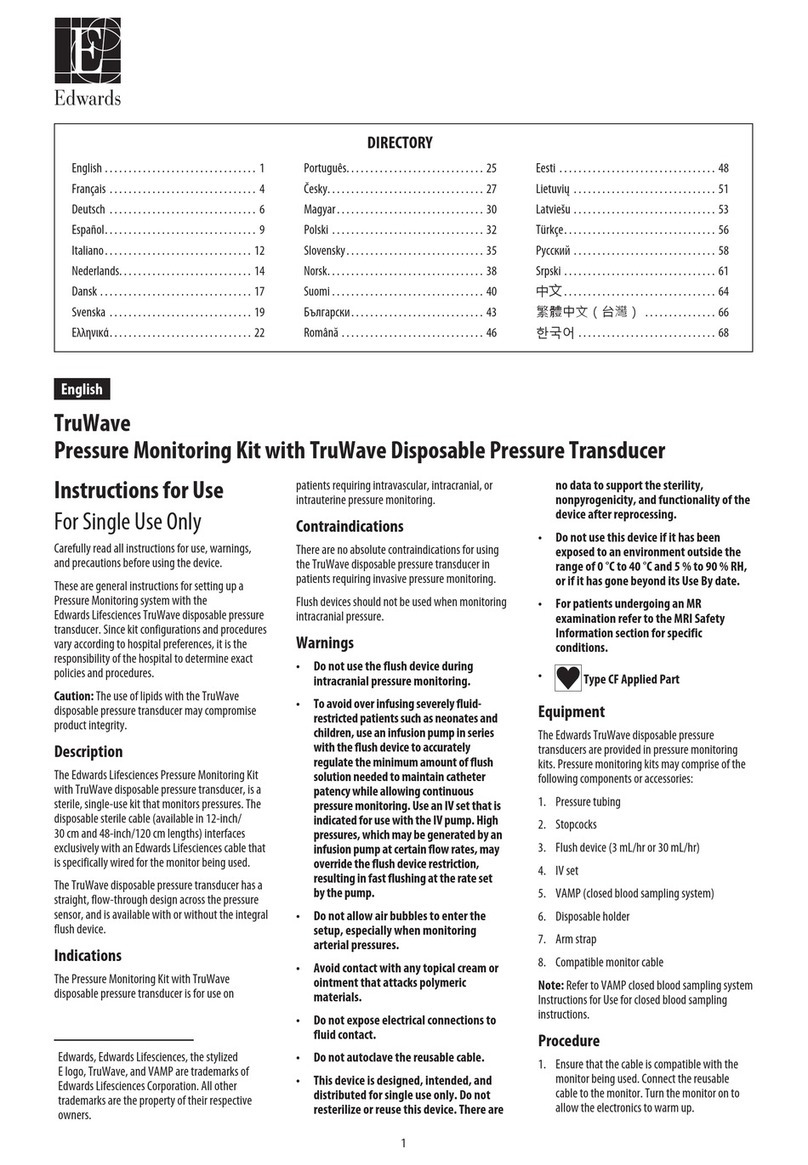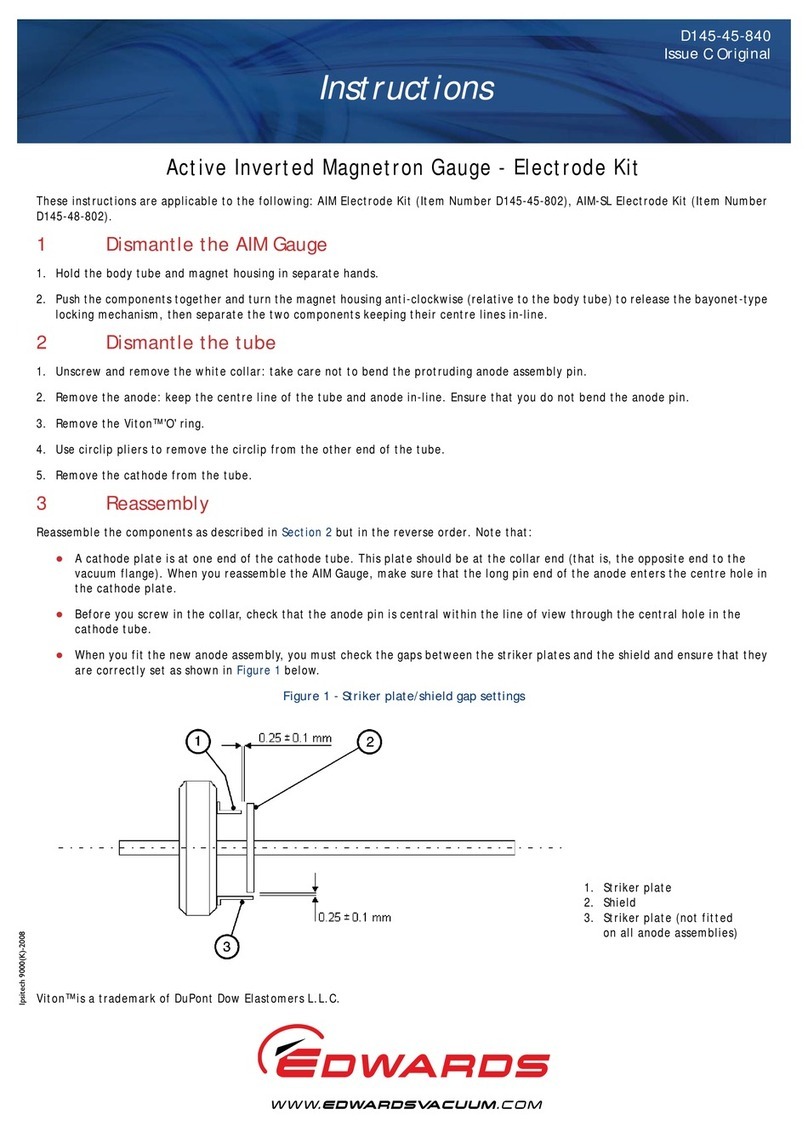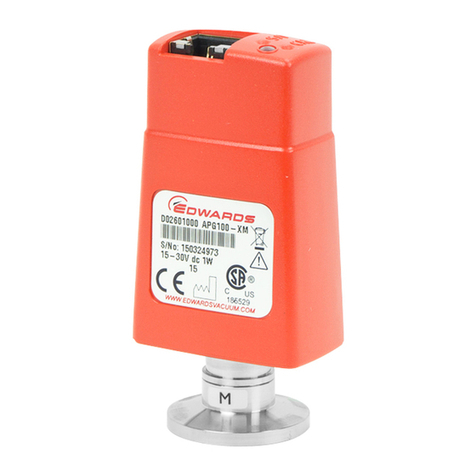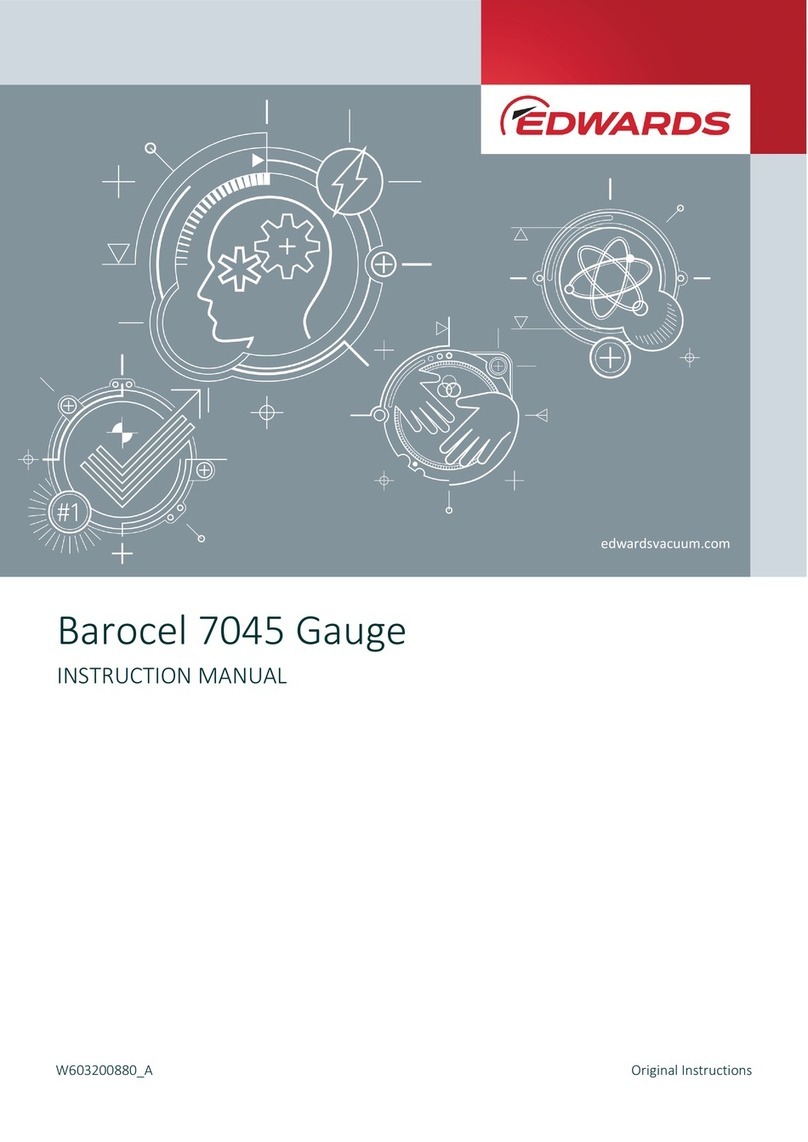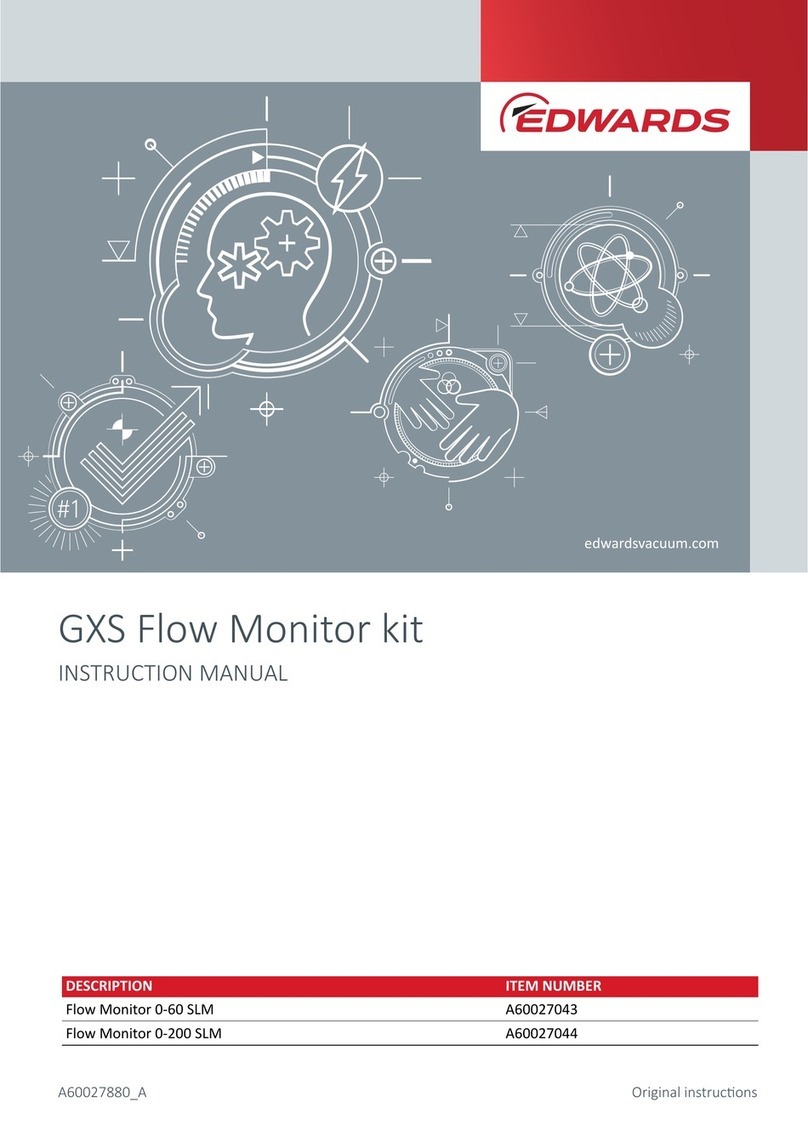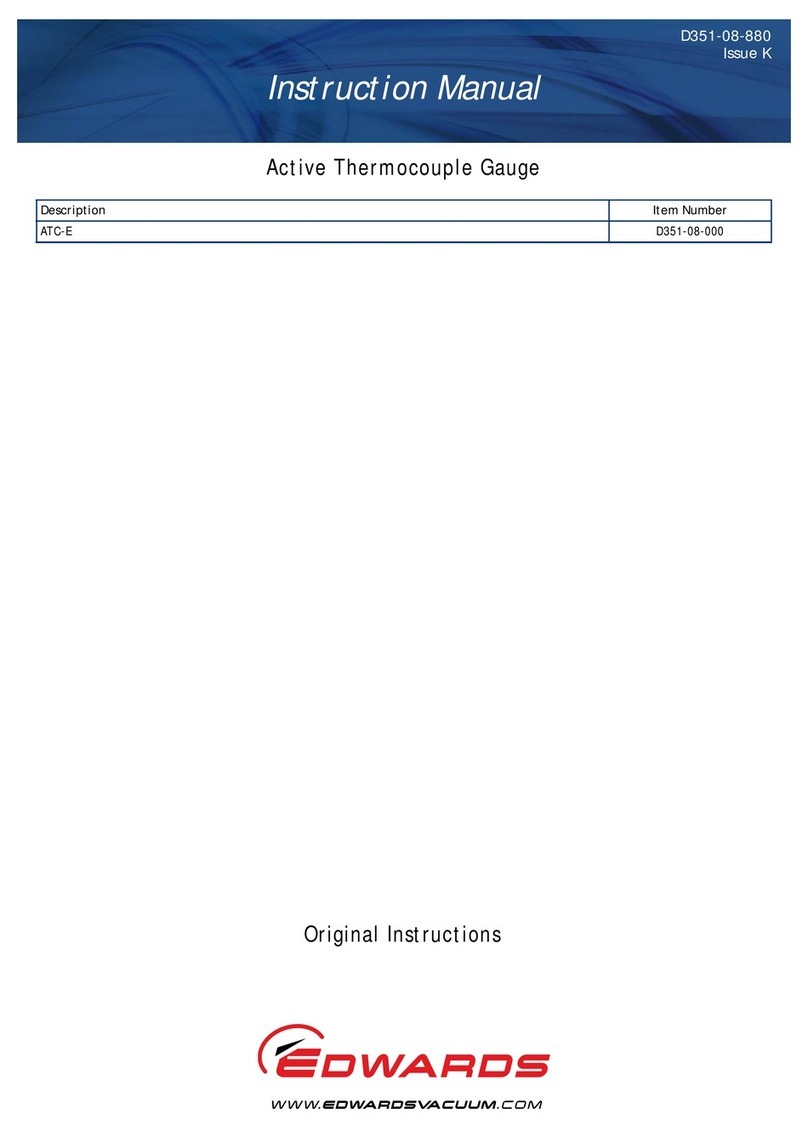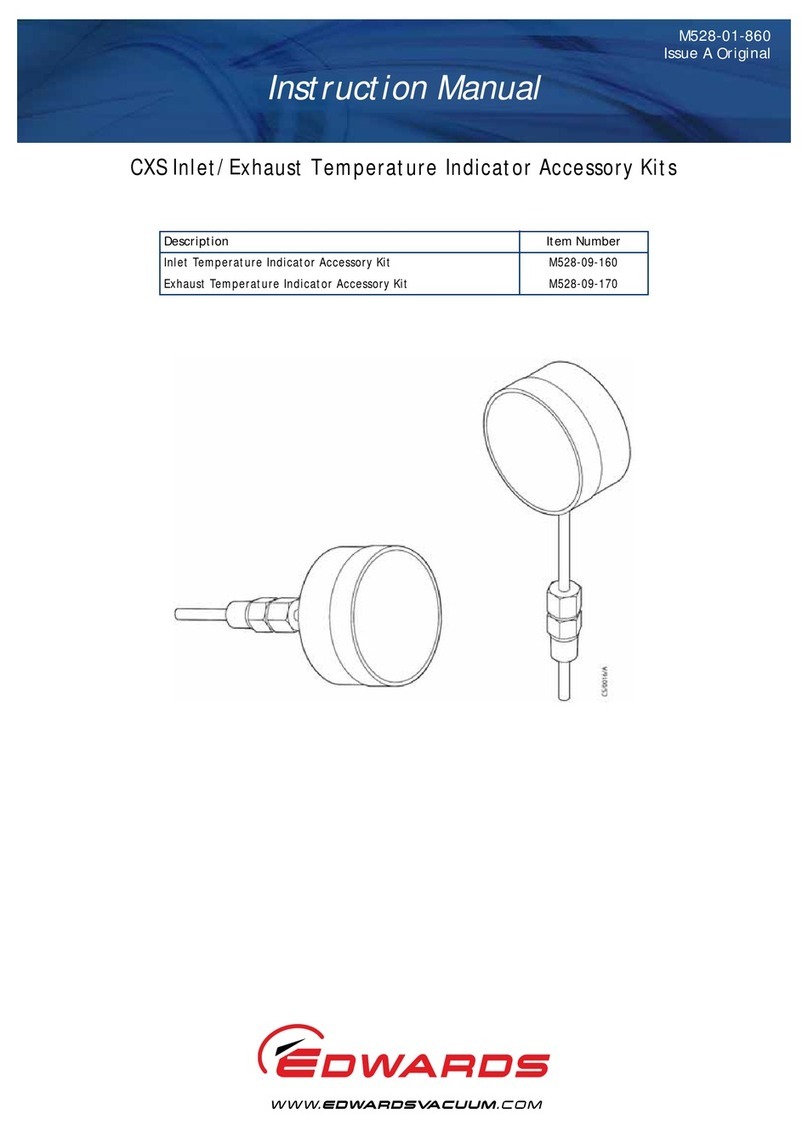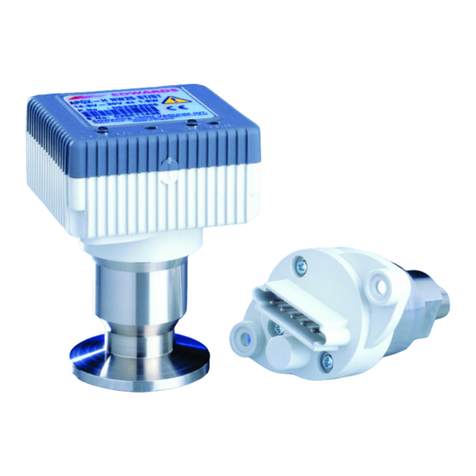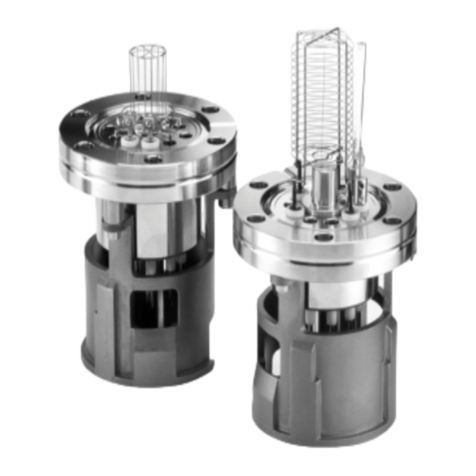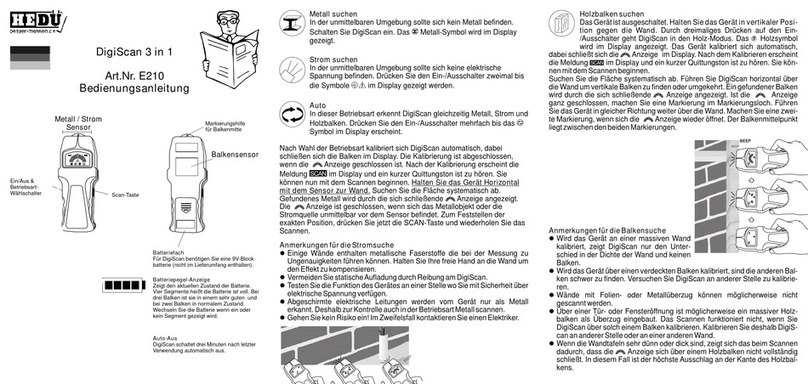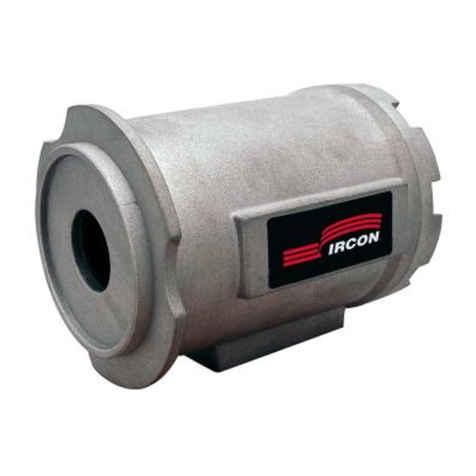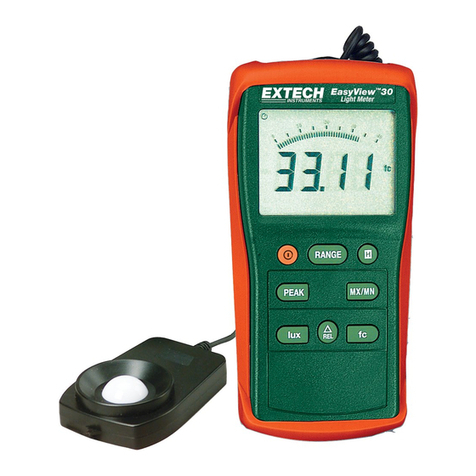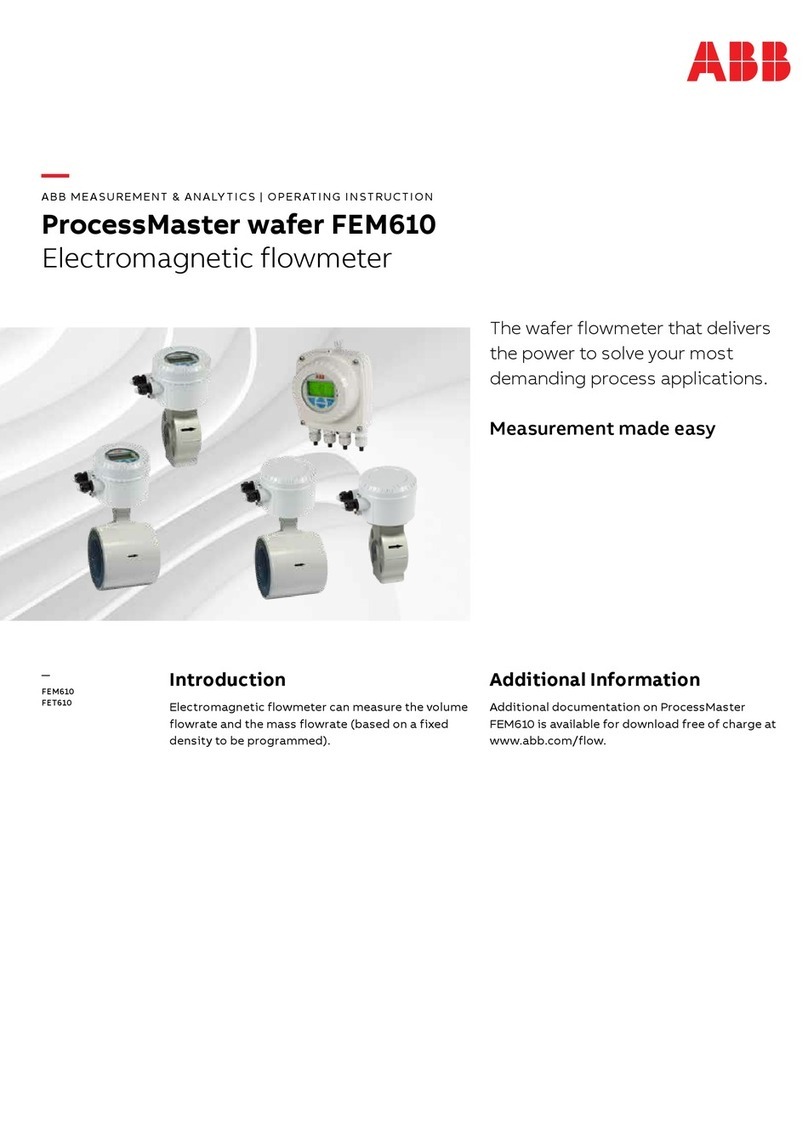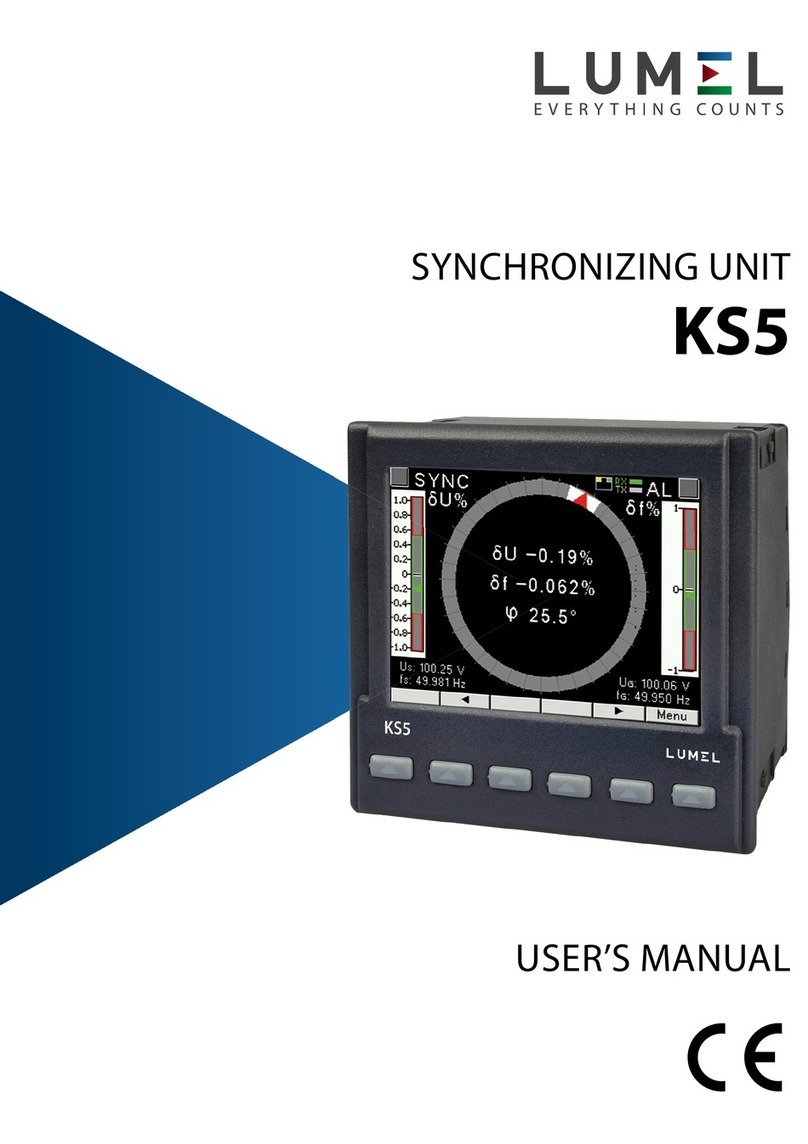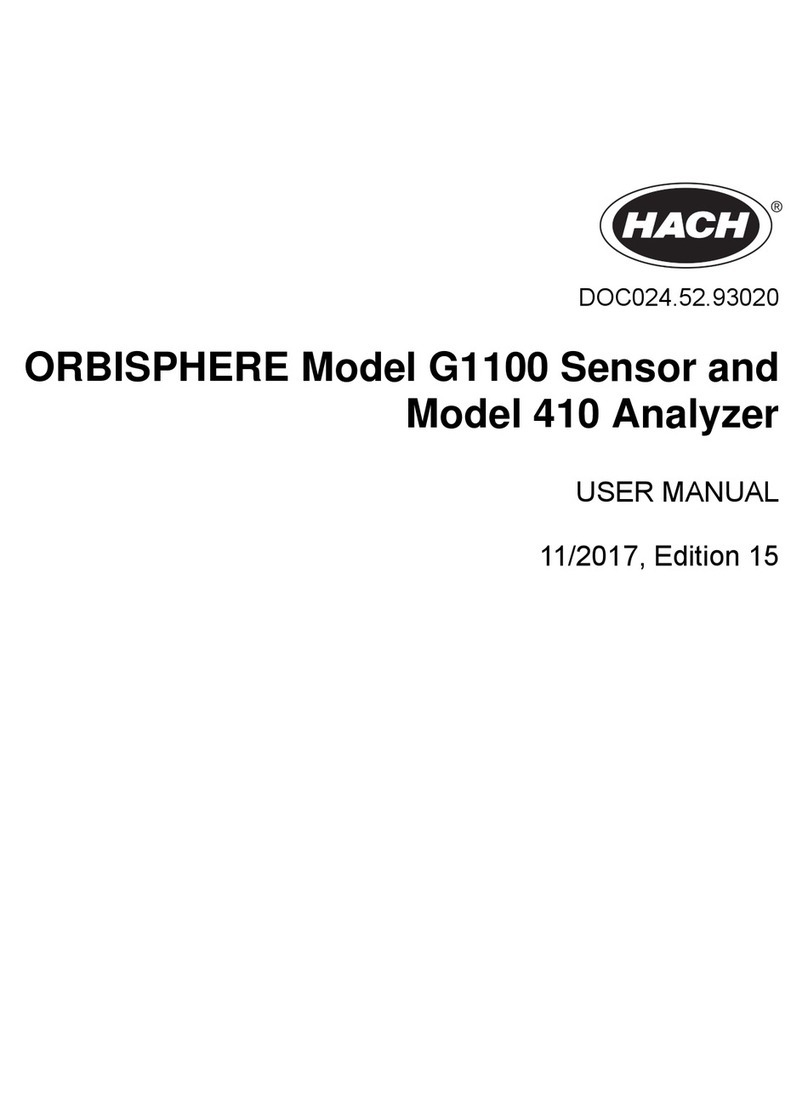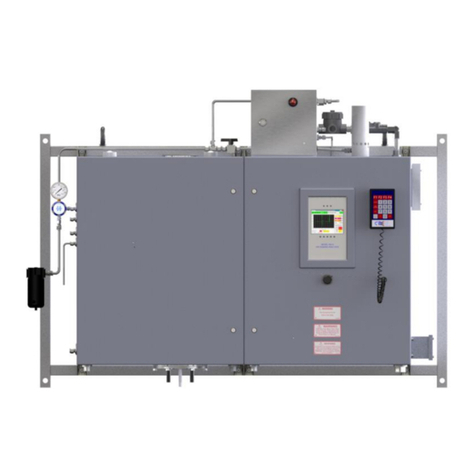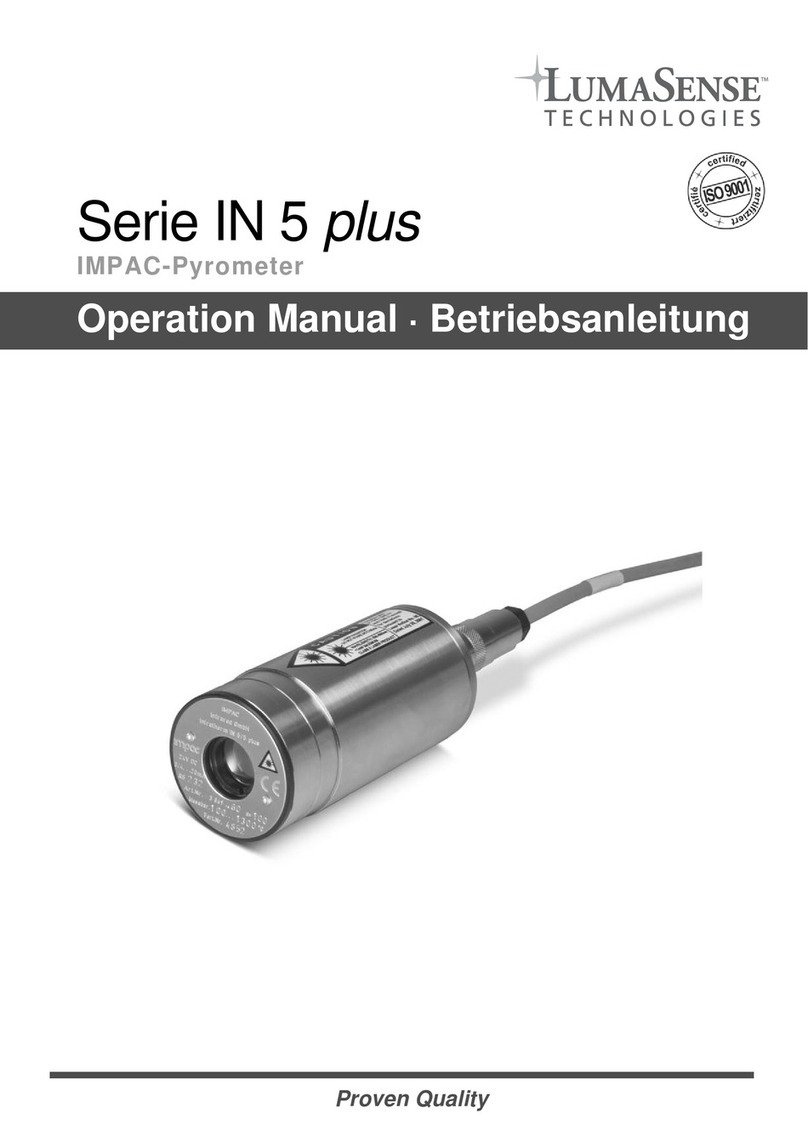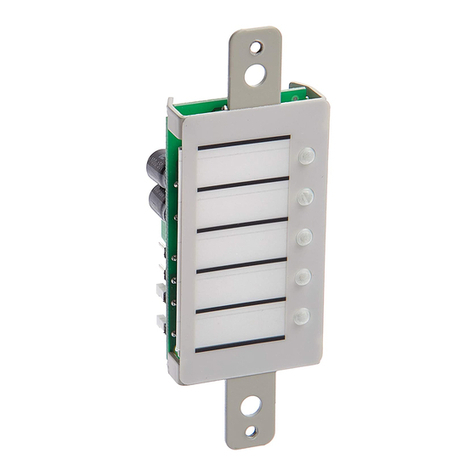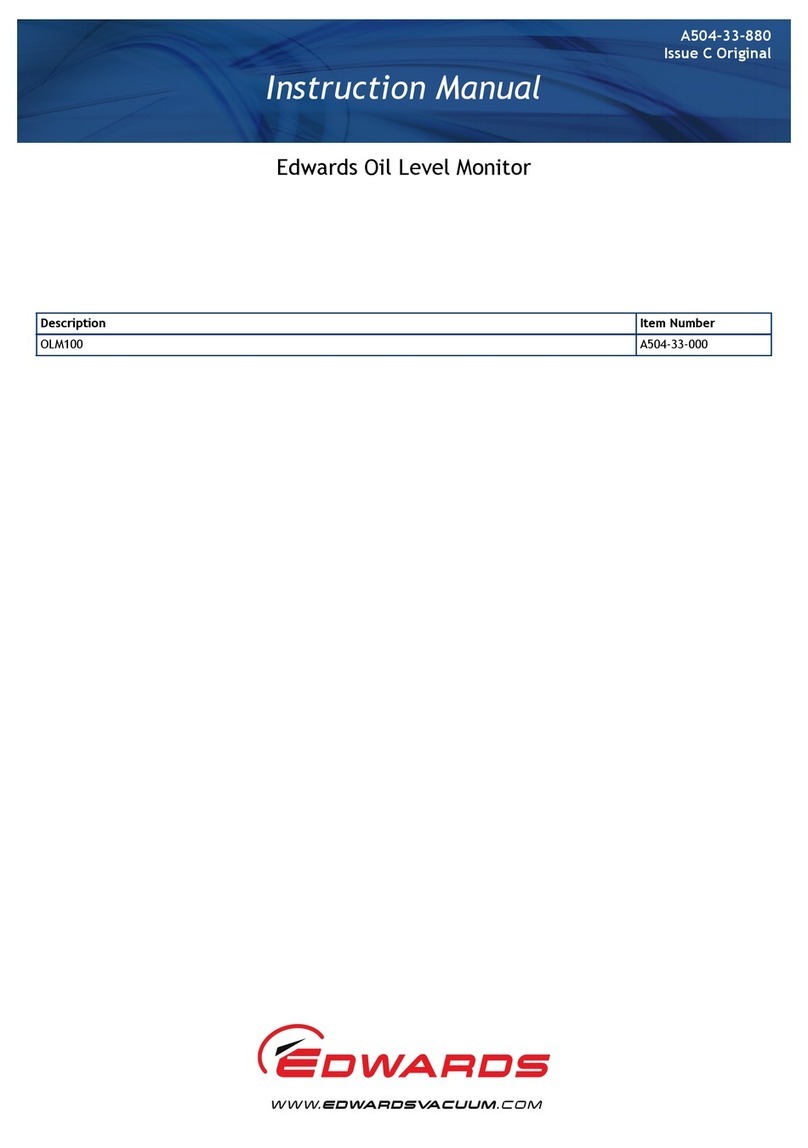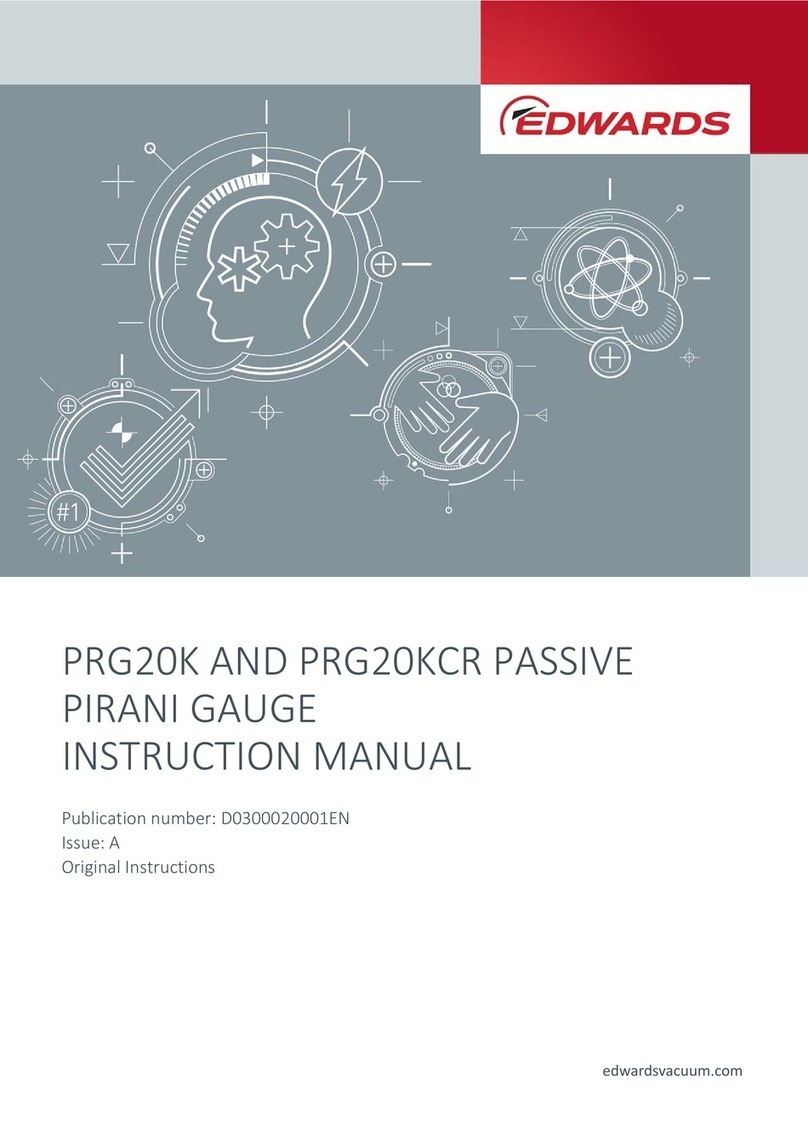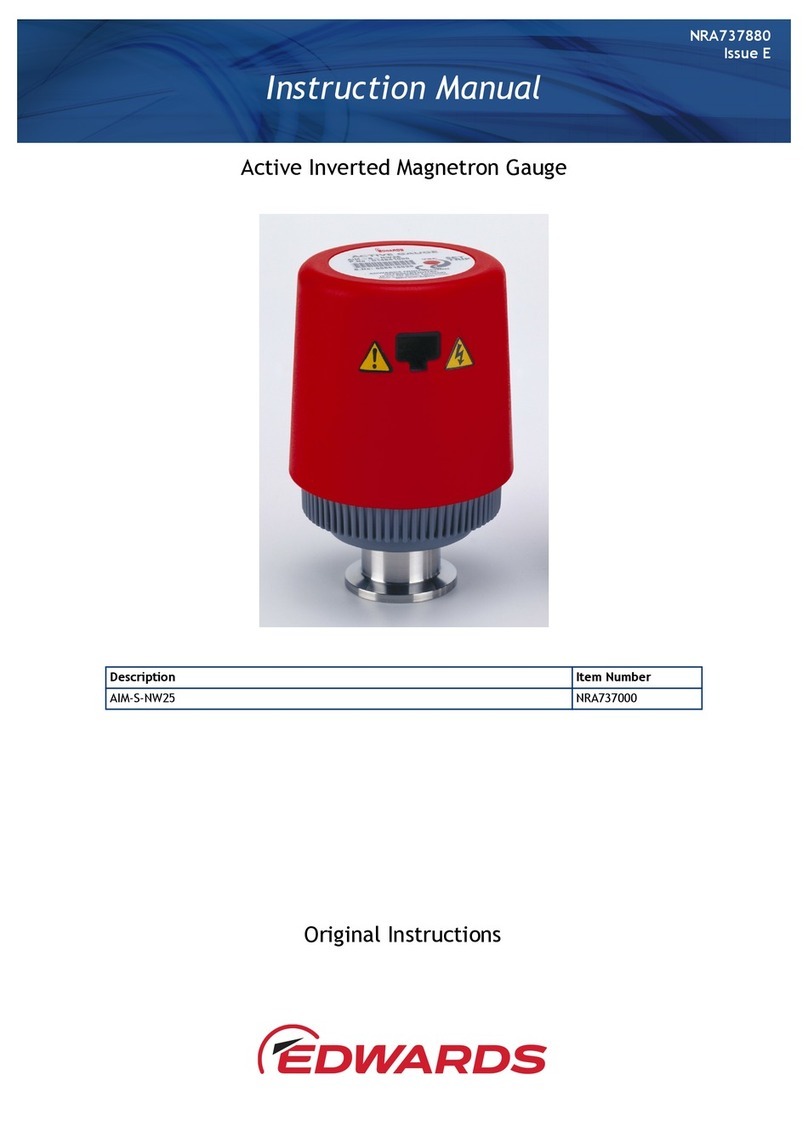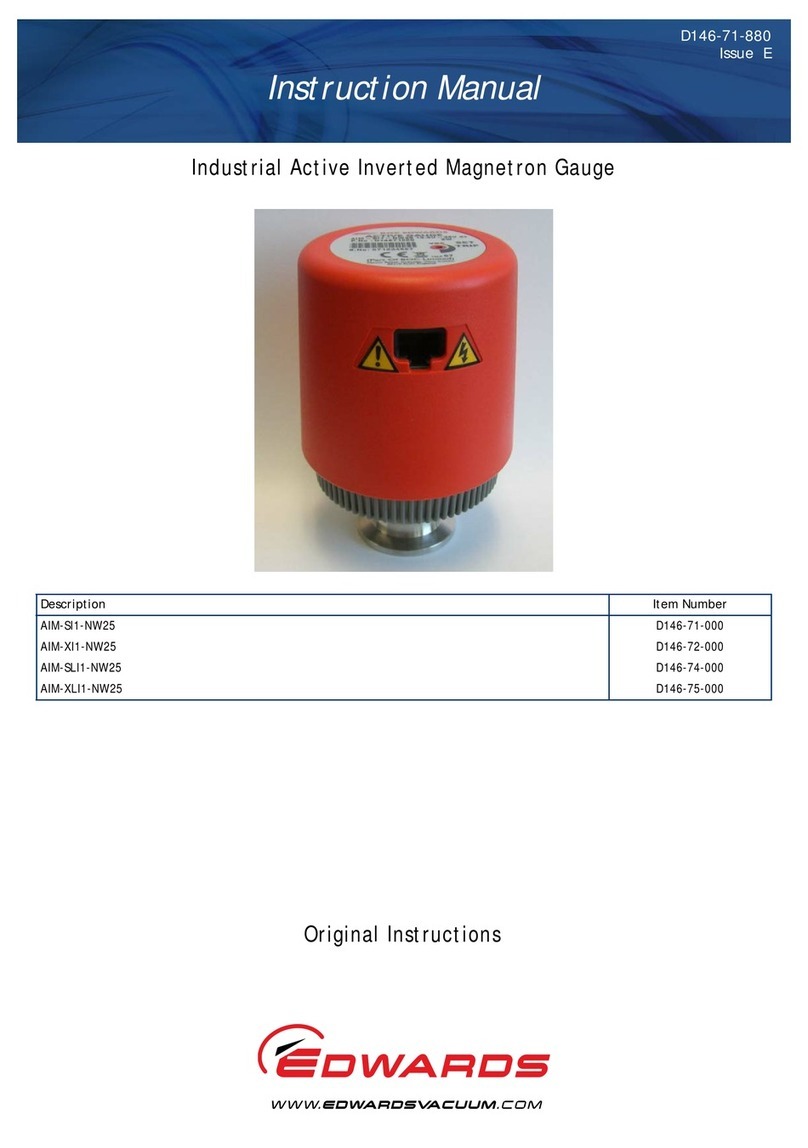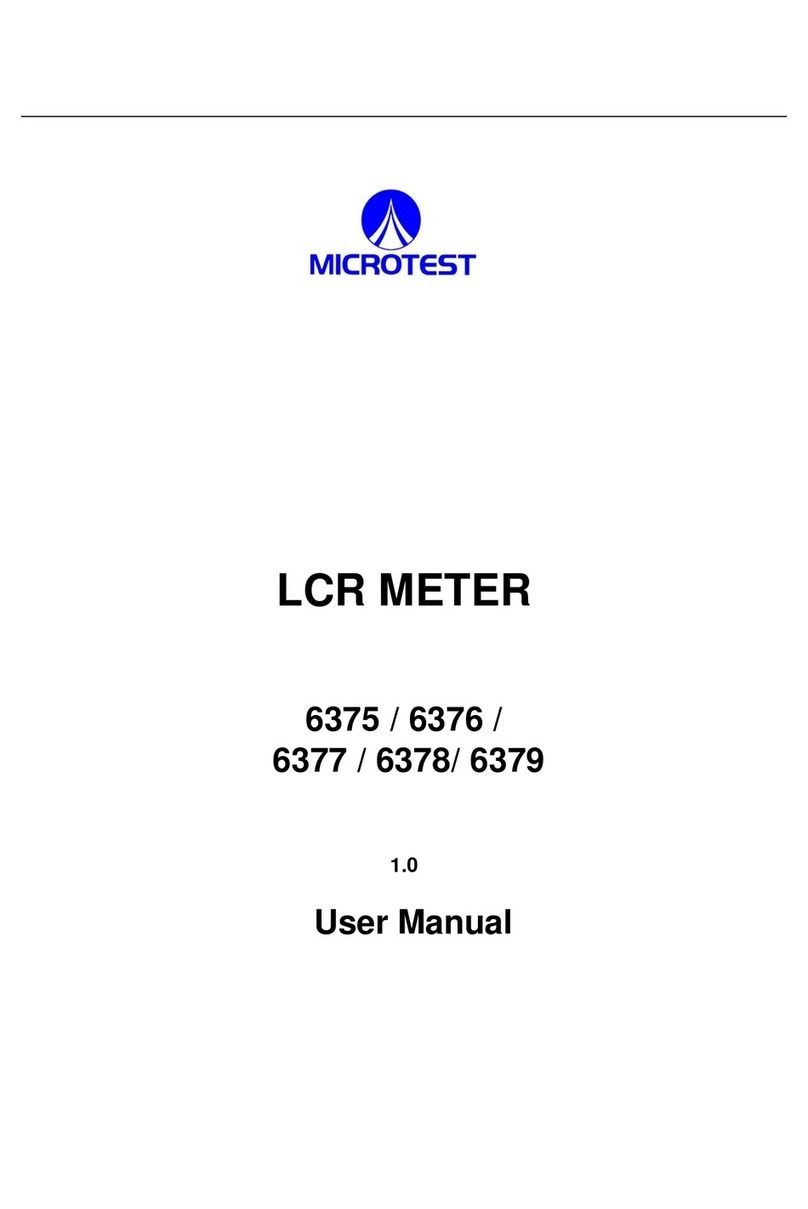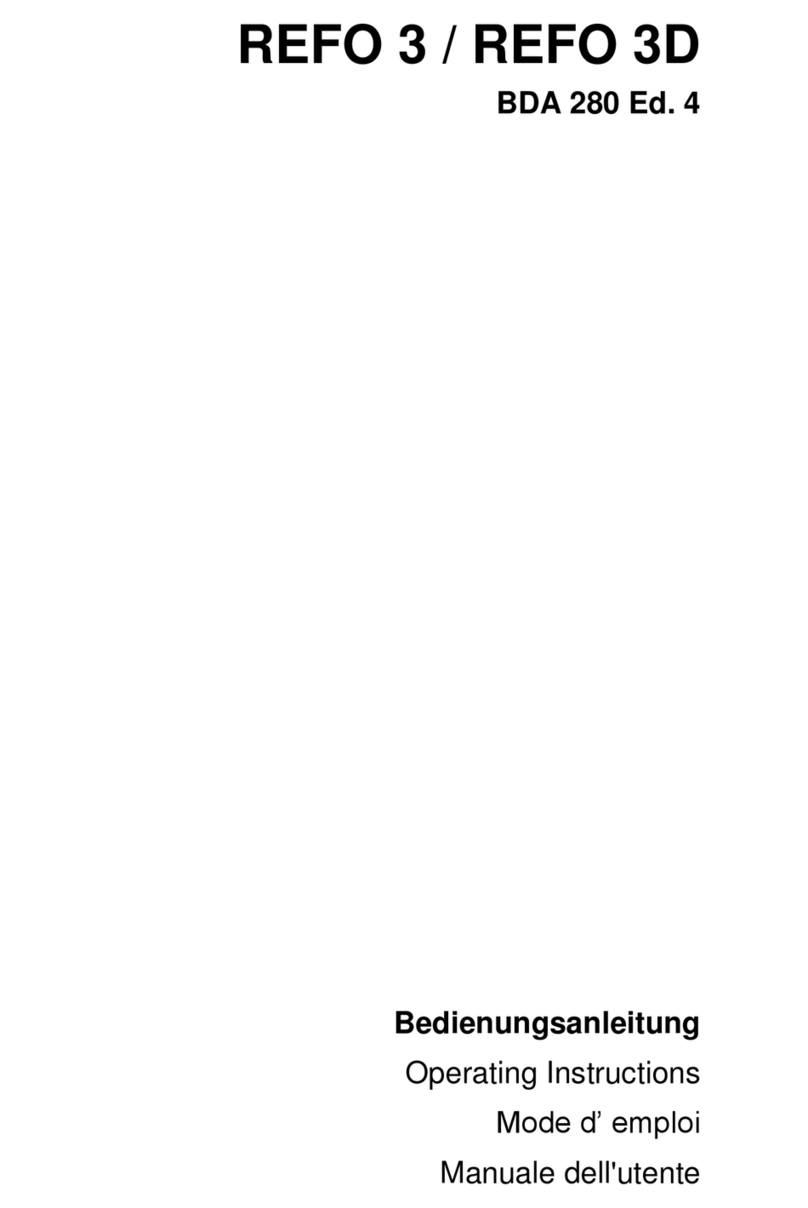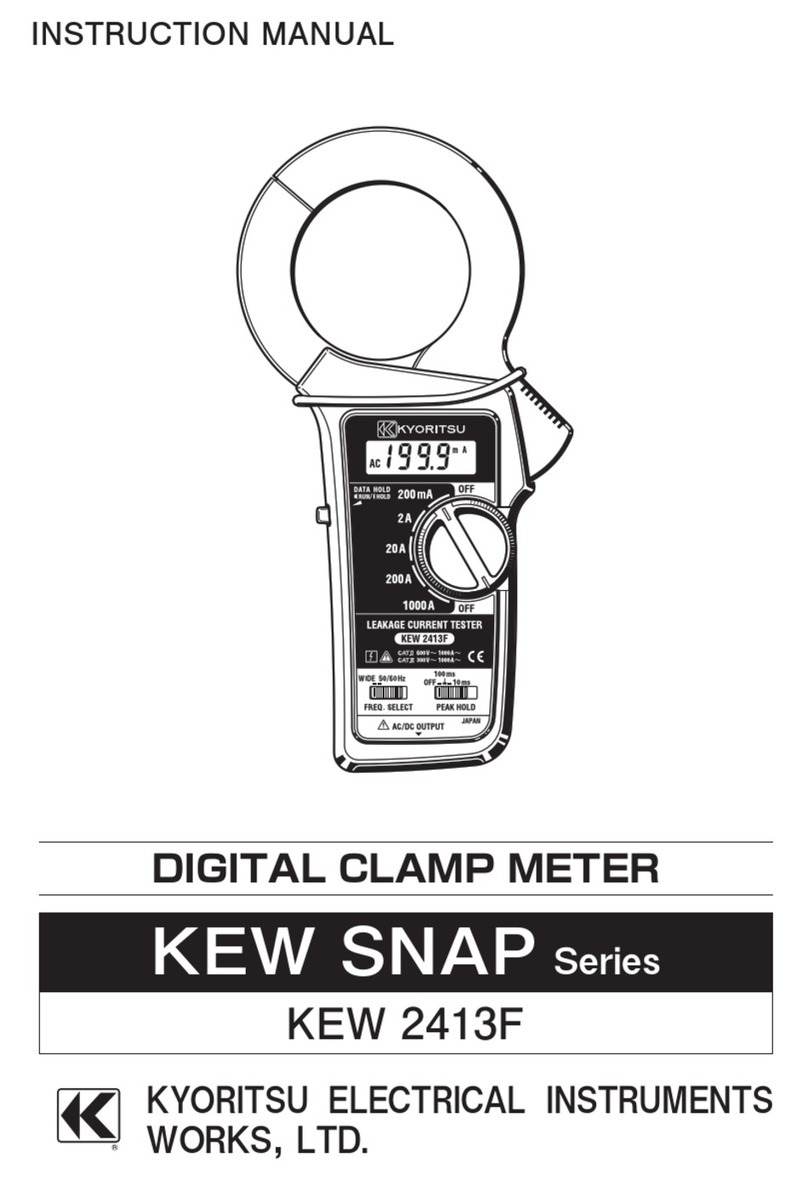
© Edwards Limited 2015. All rights reserved. Page i
Edwards and the Edwards logo are trademarks of Edwards Limited.
Contents
D146-41-880 Issue J
Contents
Section Page
1 Introduction .......................................................................................1
1.1 Scope and definitions ................................................................................................... 1
1.2 Description ................................................................................................................ 1
1.3 Gas dependency .......................................................................................................... 2
2 Technical data ....................................................................................5
2.1 Mechanical data .......................................................................................................... 5
2.2 Performance, operating and storage conditions .................................................................... 5
2.3 Electrical data ............................................................................................................ 7
2.4 Error monitoring ......................................................................................................... 7
2.5 Materials exposed to vacuum .......................................................................................... 8
3 Installation .........................................................................................9
3.1 Unpack and inspect ...................................................................................................... 9
3.2 Fit the AIM Gauge to the vacuum system ............................................................................ 9
3.3 Electrical connections ................................................................................................... 9
3.3.1 Connect to Edwards controllers or AGD display ..................................................................... 9
3.3.2 Connect to your own supply and control equipment ............................................................... 9
4 Operation ........................................................................................ 13
4.1 Safety .....................................................................................................................13
4.2 Enable and disable the AIM Gauge ...................................................................................13
4.3 Pressure measurement .................................................................................................13
4.4 Set-point .................................................................................................................14
5 Maintenance ..................................................................................... 15
5.1 Introduction .............................................................................................................15
5.2 Replace the body tube .................................................................................................15
5.2.1 Remove the AIM Gauge from the vacuum system ..................................................................15
5.2.2 Fit the new body tube .................................................................................................15
5.2.3 Refit the AIM Gauge to the vacuum system ........................................................................15
5.3 Replace the electrode assembly ......................................................................................17
5.4 Replace the electronics and magnet housing ......................................................................17
5.5 Clean the internal components .......................................................................................17
5.6 Fault finding .............................................................................................................18
6 Storage and disposal ........................................................................... 19
6.1 Storage ...................................................................................................................19
6.2 Disposal ...................................................................................................................19
7 Spares and accessories ......................................................................... 21
7.1 Introduction .............................................................................................................21
7.2 Spares .....................................................................................................................21
7.3 Accessories ...............................................................................................................21
For return of equipment, complete the HS Forms at the end of this manual.
Xplanation 5717 03/2016




















